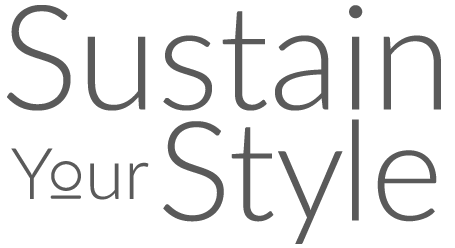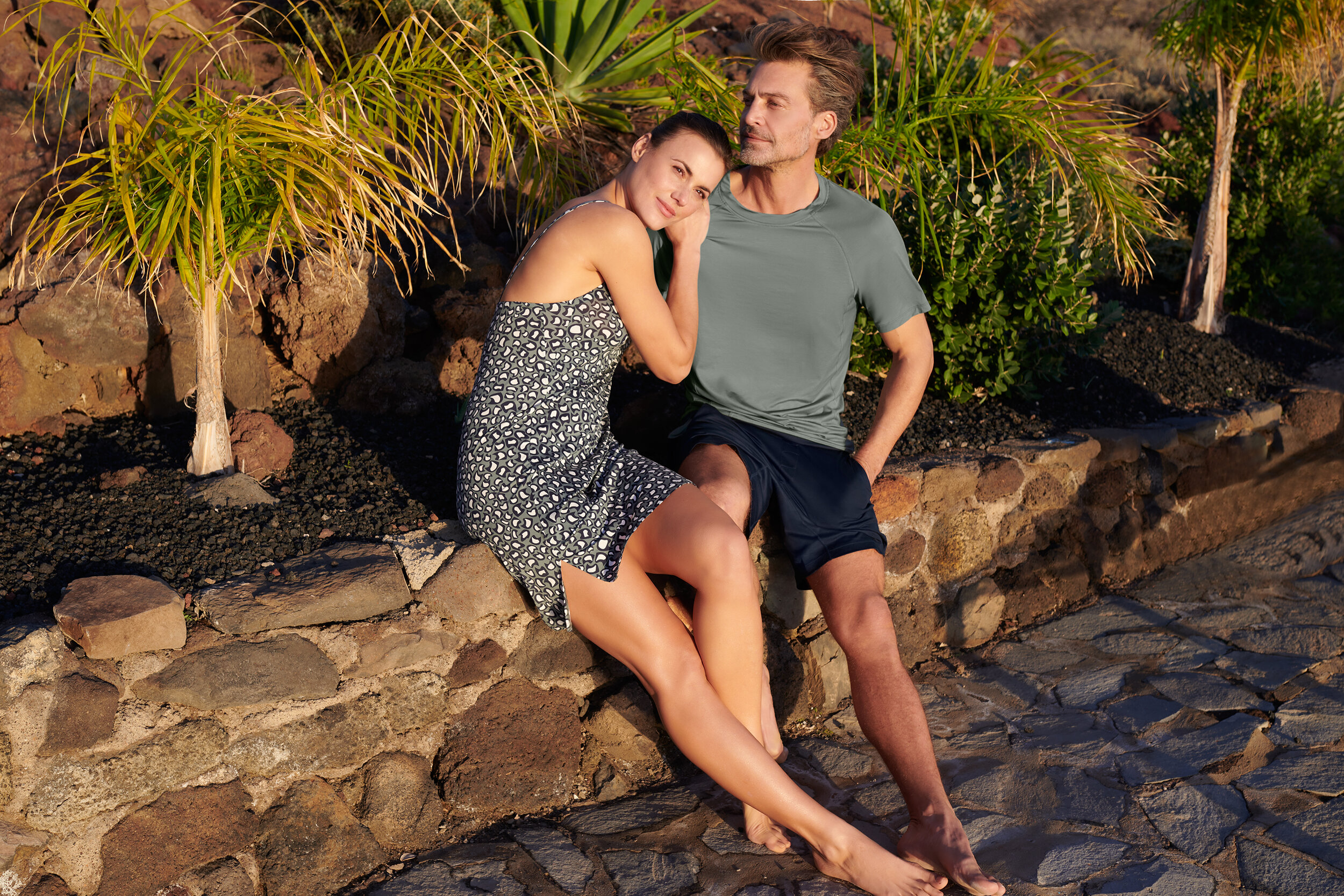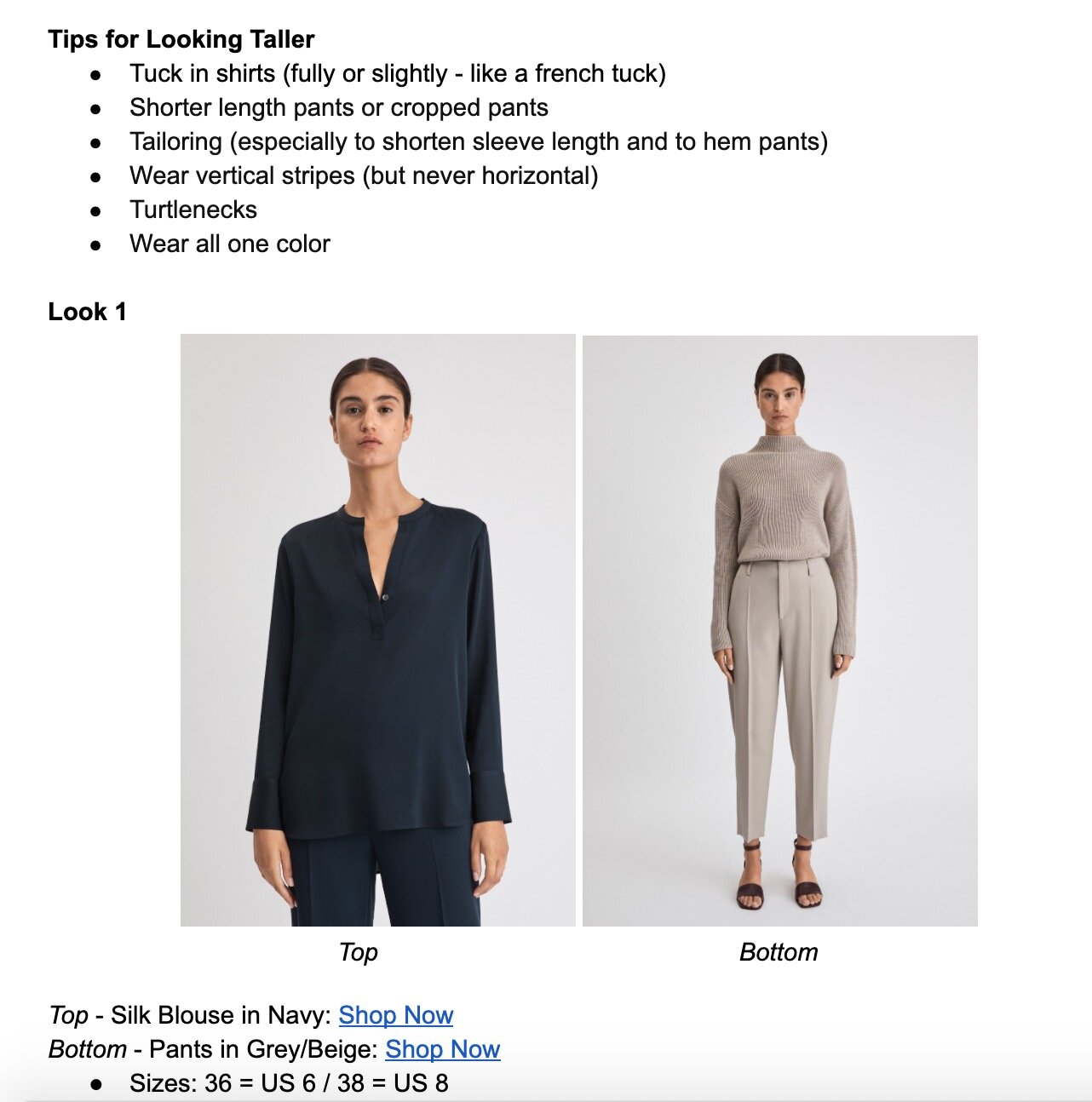A clothes swap SustainYourStyle organized in September 2019
why it’s inspiring to exchange old wardrobe
“Hey, that’s a nice pullover!”, I hear somebody saying. I look down on me and realize that I’m wearing my favorite white woolen pullover that keeps me warm whenever I start freezing.
My thoughts are being carried away by the memory of a time when I moved from Berlin to Portugal. I barely knew anyone in the country and in my first week of a new job, I met this amazing soul named Juliette which I immediately bonded with. We became really good friends and I’m sure it was no coincidence she was sent on my way.
After some time, vagabond Juliette decided to move on and leave Portugal. Only having a little suitcase she had to get rid of some clothes that she had bought there. And guess what, I was given lots of presents: The bespoken white woolen pullover, jewelry she bought in all kinds of different parts of the world and a lovely leather bag.
Me in the coziest pullover on earth
Today, I’m back in Berlin and I’m still friends with Juliette – although we both live in different parts of the world, far away from each other. I still keep her items very close to my heart, they’re so much more than just items to me, they’re part of my personal story.
I chose that story as an introduction to this article because it was the beginning of a bigger realization that clothes aren’t just pieces we collect to fill internal needs we can’t fill elsehow. They have a way bigger potential of transporting memories and stories that we can carry with us day by day.
Do clothes define our personality?
Let’s start a bit earlier. I was a shopaholic for most of my life. The more the better and as cheap as possible, please. My closet was full of pieces but no life. Realizations like the one I had with my favorite white woolen pullover made me understand that an obsessive way of shopping is just a desperate attempt of filling a hole that is impossible to fill with material stuff – living in a material world we tend to forget that.
Picture by Sarah Dorweiler
At one point, I was fed up and decided to start an experiment: I would stop buying things for a whole year. Wasn’t easy, to be honest. I had cravings of wearing “something new” in order to enhance my confidence but I didn’t give up on my personal experiment. I kept going and at some point, I realized that all the shopping windows and all the ads would not reach me anymore.
It was like I gave up an addiction and it would not trigger me anymore. Surprisingly, I started to get more creative in terms of putting my outfits together and I got more compliments for my style than ever. Also, I dug out older pieces of the darkest corners of my closet and started wearing them again.
That was the moment when I realized how manipulated I was – this realization might have taken me around 6 months. “Wow”, I thought, “it’s crazy how we are made to believe that we need to buy loads of clothes in order to feel valuable.”
As you can imagine, it was an enriching experience on many levels. It led me to many thoughts about how we perceive people and their personalities and which role clothes play in all this.
How the clothes swaps started for me
At some point, a friend of mine – who had an extremely big closet as well – offered me to swap some clothes with her. I really liked the idea and we started doing it.
There were clothes that she didn’t enjoy anymore but I totally fell in love with and vise versa. Such a pleasure to see how different perceptions can be based on our individual tastes.
We swapped from time to time and I started wearing her clothes with such an appreciation and connection. The secret around this: It’s less about where you bought a piece or how much you spent on it, it’s about the feeling you’re having when you’re wearing it, right? Because you radiate this feeling of appreciation and contentment and others feel drawn towards it.
Picture by Shanna Camilleri
Inspired by this experience, I started doing swaps with a little circle of friends. We would meet in one of our apartments, bring clothes that are in good condition and swap them with each other.
The result: Every now and then we meet and you see a piece that you had abandoned in your own closet for years, now being worn by a dear friend of yours and shining. I can tell you, this creates such a nice feeling in your heart and definitely makes your lips smile.
Here’s how you can get started organizing a clothes swap yourself very easily
Having said that, I would love to inspire others to do the same and swap clothes that don’t serve you anymore but might make somebody else very happy.
To help you get started, we created a little list that explains how to organize a clothes swap:
A clothes swap SustainYourStyle organized in December 2019
1. Find a cozy place. Depending on the number of people you would like to invite to your clothes swap, you can either organize it in your own apartment or rent an external space for it. If you’re planning to organize it privately and to donate some clothes afterward, some event venues might even give you the space for free – worth asking!
Another idea could be to ask organizers of bigger events if they would like to host a clothes swap. That’s what SustainYourStyle also did at Factory Berlin and it was nice! People could bring one or two pieces with them to the event and swap them at your booth. It would need to be announced beforehand by the organizers so that people can prepare.
2. Limit the number of pieces. That’s a big one. Before I got to understand this, I ended up with a bunch of pieces that nobody wanted. It’s a good idea to limit the pieces that people are bringing to the swap. Tell them that quality goes over quantity.
So they bring two up to ten nice pieces that are still in good condition but don’t serve them anymore.
3. Make the pieces shine. It helps to provide a coat stand or shelves in order to make the clothes look nice and not to throw them onto each other.
Whenever I did a clothes swap at my place, I put clothes hangers so that people could hang their pieces onto them. That helps to see all pieces at one glance without rummaging through all of them and making a mess.
4. No party without snacks and drinks! We all know that cookies, a glass of wine or nice lemonade can be such an upgrade to an event. If you’re organizing something privately, ask people to bring something. By doing so, you make people linger and stay longer. That’s normally where the personal stories start to unfold.
5. Let the magic happen. Sit back and enjoy what you’ve organized. Ask people about their pieces: Where did they get them and why do they want to get rid of them? I’m sure you’ll hear lots of stories that will inspire you.
6. Decide what to do with left-overs. Normally, there will be some pieces left that you will need to decide what to do with. Donating is always a good idea. Another one might be to store them for another clothes swap.
A clothes swap SustainYourStyle organized in December 2019
Some experiences and ideas from clothes swapping experts
In order to give you a deeper insight into the clothes swapping topic, I decided to ask some professionals if they want to share their experiences about swaps. Isabel who’s a member of the SustainYourStyle team and Sabrina and Elena who worked as volunteers agreed to share their opinion with me. I hope it will inspire you as much as they did inspire me.
Isabel, when and how did you first touch the topic of cloth swaps?
Isabel wearing a jacket and a pair of jeans from a SYS swap
After years of piling up clothes in my wardrobe that I just wore a couple of times, I sold all my clothes and made a fresh start. I landed in Berlin in 2017 with just a suitcase. It was such a relieving experience to realize that I did not need all the clothes that I gathered for years!
I also started getting myself informed about the social and environmental impacts of fast fashion, and I rebuilt up my closet with clothes from flea markets and second-hand shops.
By 2018 I got familiar with the green scene in Berlin – events, gatherings, and my first swaps. Plan A, a Berlin-based social enterprise helping companies reduce their environmental impact, organized one of the most inspiring swaps I have attended.
I loved the concept, and since then, swapping became an interesting alternative for me.
Why did you fall in love with clothes swapping? / What was the magic about?
Picture by Amanda Vick
It is fun – just like treasure hunting! Before coming to Berlin, I always felt that I was wearing the same as everyone. And that's reasonable – we all buy from the same fast-fashion chains, and follow the same trends. In my case, I did not find the time to put that to an end.
Nowadays, and especially in cosmopolitan cities like Berlin, many people broke the social rules and bet for a less uniform and homogenous fashion trend. The most unique, the merrier.
Back in Jordan, where I lived for nine years, I used to swap items with friends or get clothes from those that were leaving the country for good.
For me, it was always adorable to wear my friends' garments – it made me feel closer to them and have more vivid memories while wearing those pieces of cloth.
This is what we try to recreate in our swaps while renewing our closets fun and with a minor environmental impact.
You organized several clothes swaps yourself. What's your favorite story you remember at a clothes swap?
A clothes swap SustainYourStyle organized in September 2019
Last summer, many friends of mine started asking me where to buy second-hand clothes or what to do with their unworn garments. So, my flatmate and I organized a small swap in the café she manages. The place is ideal – excellent location, small but cozy, exciting food concepts, and a lovely terrace for sunny days.
Our swaps are small in size, which allowed us to create this casual and pleasant atmosphere. Totally strangers naturally engaged in conversations about sustainability, fashion, and events in Berlin while enjoying a glass of wine.
For me, it is gratifying to see participants talking to each other about the story behind each item they brought with them. In the first swap, a girl fell in love with a bag I bought on one of my trips to Istanbul. We ended up talking about the bazaars in Istanbul. She came back to the second swap wearing the same bag. She told me how much she is enjoying it. It felt good to see someone was giving it the proper use I could not in years.
Moments like this are pretty typical. It is often to see girls talking to each other when someone is trying on a cloth they brought. "This looks awesome on you! I only wore it a couple of times. You could try on with a black top and a necklace."
What is still tricky in terms of organizing the swaps, and what needs additional thoughts?
In my opinion, the biggest challenge is to increase awareness about the concept itself. Swaps are not perceived yet as a real alternative to fast fashion or buying new clothes. It is instead conceived as a chance to get rid of worn-out garments, which are difficult to be sold. In other words, swaps are seen as an alternative to donating clothes to charity and not to shopping.
In the beginning, we only established a limit to the items that could be taken to help reduce compulsive consumption. I found this approach quite helpful to avoid ending up with more unneeded stuff in our wardrobe just because they are 'for free.' However, after the last swap, we decided to also set a limit to the items allowed to be brought.
What's your big vision when it comes to clothes swaps?
Picture by Artem Beliaikin
In the last years, the second-hand and vintage market has grown in popularity to the point that, according to ThredUp, fast fashion could be replaced in a decade. In cities like Berlin, London, New York, or Amsterdam, second-hand or pre-owned clothes are not linked anymore to people with scarce financial resources.
From SustainYourStyle, we consider swapping is an excellent way to reduce our impact and continuously renew our wardrobe without compromising our natural resources.
On top of that, the swap concept promotes socializing and relation-building, especially in this hectic digital era. This is something average shopping cannot beat!
Sabrina, you volunteered in SustainYourStyle swaps. Did your idea about swaps change after volunteering, and how?
Sabrina who helped us organizing our clothes swaps
I’m the typical person that often buys clothes without really needing them or just because they caught my eye in a store. Having bought them, I often don’t even wear them. So it happened that my wardrobe was full of clothes that I don’t wear / don’t even fit in/ don’t even like anymore.
Normally, I gave them away to people who needed them or sold them. So I always tried to find a solution to get rid of my unused clothes without throwing them away. Then, my friend told me about her idea of organizing a swap party.
I liked it and I wanted to join in order to help organize it. At the same time, I had the opportunity to find something new and nice I would wear more often.
This year was the first time I heard about clothes swaps and I volunteered at an event like this. I liked the idea from the very beginning, and it was a very good experience. Seeing the amount of clothes that other people brought to the event made me think about how much we are buying without really needing anything.
Since the swap experience, I really try to buy less "brand new" clothes and I have more interest in swapping or buying second-hand clothes.
Elena, you also volunteered at our SustainYourStyle swaps. What would you like to share about your experience?
As it happened to me in many other issues, I started to read and get informed about a specific topic, in this case about the fashion industry.
Elena wearing a dress she got from a SYS swap
I realized it has an unethical production model that I completely reject. Yet I never dared to move a step forward and change the way I consume. I guess I did not because of convenience, lack of knowledge or both.
So, since a friend of mine was organizing a swap, I decided to volunteer. It seemed an interesting experience for me to know different alternatives to the ones we know.
My idea about the swap totally changed. Before volunteering, I thought many people used swaps as an excuse to get rid of very worn-out clothes. This happens in some swaps, not in all of them.
However, what I found in this swap was clothes in good shape, and that people do not wear anymore or do not want to continue piling up in their wardrobes.
When will you organize your first swap?
We hope that we managed to give you a good feeling for what a clothes swap is, how it can be organized and how clothes swaps could inspire people in order to rethink their ideas about fashion.
We’re very happy to hear about your swapping experiences. Please don’t hesitate to drop us an email and share your individual story.
Let’s inspire more people to find alternative ways of getting new clothes – we’re all in this together!
Pitcure by Grit Siwonia
About the author Karina Schönberger
Karina works as a creative content writer and strategist. She studied media and worked many years in marketing, events and PR. Through mediation, yoga and inner work she found her path to a conscious life and decided to work independently for herself. Today she lives in Berlin and loves to write about the important things in life such as health, transformation, nutrition, astrology, traveling, yoga or meditation. The native-born Kazakh believes that each of us deserves a healthy and fulfilled life and has the power to heal.




















































